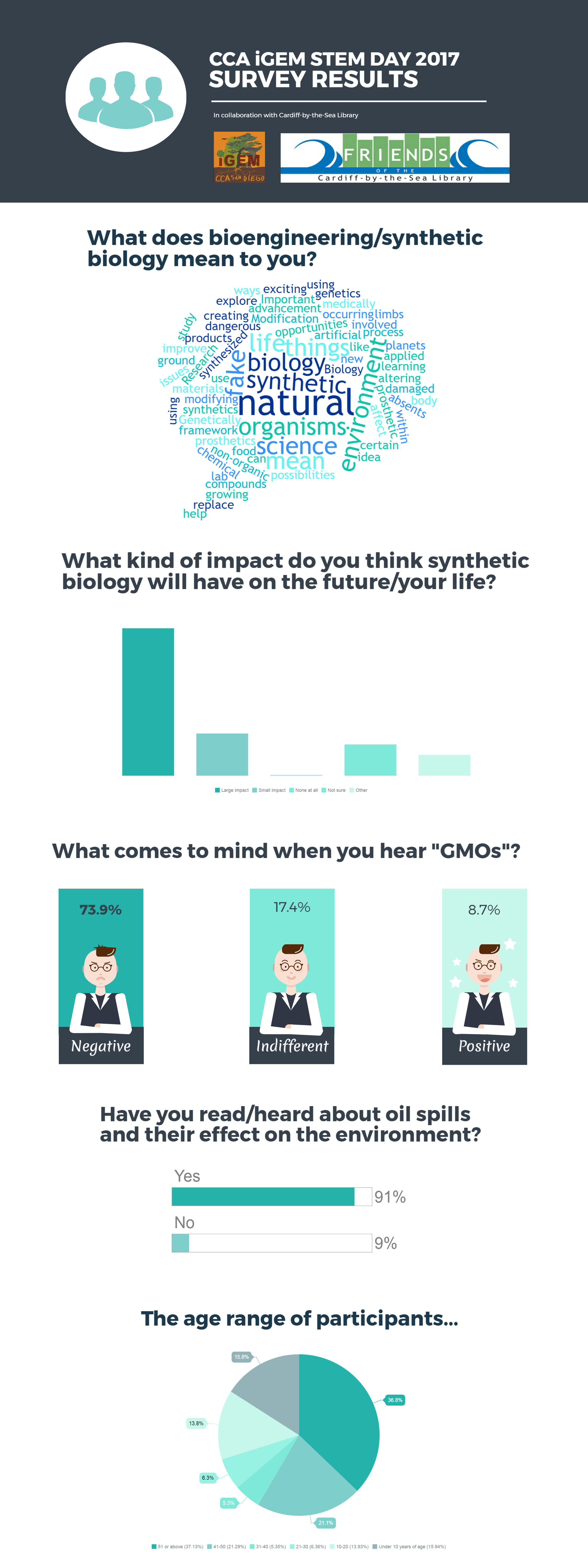Human Practices: Silver
iGEM Summer Camp
Our Outreach team simultaneously held two one-week long summer camps in both genetics & environmental science and physics for elementary to middle school students. We taught the students concepts pertinent to everyday lab work, reinforced with hands on activities, experiments, and projects. Furthermore, we taught the students fundamental biotechnology techniques, such as micropipetting, gel electrophoresis, serial dilution, growing bacteria in petri dishes, and PCR. In the physics camp we delved into concepts, such as energy, forces, light, heat, and kinetics. As a result of this camp we increased publicity of our team, project, and the field of synthetic biology as well as increasing exposure to advanced biotechnology techniques for younger students who did not have this opportunity at their own schools. We received much positive feedback from the students, and many of then expressed interest in attending another camp and in joining the iGEM team as high schoolers! Through the results of our camp, we discovered that synthetic biology could be extremely beneficial for the future of science, because so many children were interested in our research and in learning more about the fundamental concepts in our project. Thus, we knew that our project would greatly improve the lives of future generations and be safely applicable in a world who welcome science with open arms and excitement. We expand more about our camp and other education events (including pictures) under the Education & Public Engagement page.
Community Survey
After one of our library STEM day events, several members of our team surveyed local community members in a Cardiff-by-the-sea market area on their opinions/pre-existing knowledge about genetic engineering. This opened a lot of interesting conversations such as discussions of the general public perception of controversial topics such as GMOs, or sparking interest in the future that synthetic biology holds. Coincidentally when we were talking to many people within the market area we met a man whose job was to clean oil spills (he talked about the majority of techniques used, such as the use of sponges) and from there we were more eager on meeting with companies and hear how our project could be directly implemented or would better be appreciated by someone in the field. Thus, we not only invoked public opinions but also discovered new ways we could make our project a reality in application and implementation! Upon further inquiry, we discovered that oil spills was a main concern of many of the individuals, since they have lived next to beaches for much of their life. By introducing a bacteria that could potentially mitigate the detrimental effects of oil spills, we hope to improve not only our surrounding beach environment, but also to increase people’s lifestyle and happiness in the process. We expand more about our community survey under the Education & Public Engagement page.

Bioethics Seminar
The Bioethics Seminar allowed us to connect with our community by discussing the ethical concerns surrounding scientific, especially biology related, concerns in our society. By talking at length with members of our local community, we found out empirically that, although our community was rather humanities-focused, they greatly valued science as a major proponent of future success in our world. This was further emphasized by our “What Does Science Mean To You” Board, which showed that people greatly treasured science in their lives. Thus, we were assured that our project, which serves to improve our environment, was going to be widely applicable and safe, as tested in the lab, in reality. We expand more about our Bioethics Seminar (including pictures) under the Education & Public Engagement page.
iGEM STEM Days
Cardiff-by-the-Sea Library
We set up stations; they were lab safety, extracting DNA from strawberries, DNA modeling, and a visual demonstration of our project that included an oil presentation and oil over water demonstration (teaching a bit of chemistry background). We received a myriad of positive feedback: "I know I want to be a scientist and this just shows how much fun science is". It was so rewarding that we could inspire future young scientists! More on the Education and Public Engagement Page (including pictures).

Torrey Hills Elementary School
In an effort to bring the ideas we tested at the previous STEM Day, we wanted to bring it to a larger audience and in a more organized way. As such, we contacted the local elementary schools and had the opportunity to set up an assembly-style presentation at Torrey Hills Elementary School. With more than 100 6th grade students and their four respective teachers as our audience, we were faced with the unique challenge of delivering our message on an unprecedented scale. We chose to present primarily on the concept of DNA, which had yet to be introduced to the sixth graders in class. We used play-doh and pipe cleaners as models for DNA and discussed how our project modified the DNA of bacteria to help solve oil spills. We ultimately hope to have introduced the sixth graders to new ideas while challenging the teachers to include synthetic biology in their lessons as a more present-day scientific innovation.

Reuben H Fleet Science Center
In a collaboration with the Tinkerer’s Club, at the Reuben H. Fleet Science Center, an event that allows young children to “tinker” with science and engineering, we talked about synthetic biology and the detrimental effect of oil spills on the environment to any children and adults who were interested. The children who stopped by our tables are all interested in science, and we explained to them what synthetic biology is and what they can do to further understand it. At the first table, we talked about safety and what needs to be done in a lab to be cautious. For example, we had the kids identify what aspects of the iGEM lab safety image is. We also explained some aspects of laboratory procedure and how important it is to calculate exact values of different substances. At another table, we allowed children to dip a bird feather into some oil, so that they could see how bird’s body parts are restricted when they are surrounded by crude oil. In addition, we had two stations where we talked about DNA and its structure: the matching game station and the DNA modelling station. At the matching game station, we had children match up base pairs to understand the components of DNA. At the DNA modelling station, we let children build a double helix with toothpicks and marshmallows.

Synthetic Biology Kits
Our team decided that we want to package the lessons that we created so that we wouldn't be the only ones spreading our ideas. We met up with some of the individual teachers, including the department head of the local middle school, and discussed how they might incorporate synthetic biology as a concept into their curriculum. We hope to spread our message into the community in a sustainable way so that once iGEM 2017 ends, our project will leave a lasting impact in the minds of local students interested in science. Hopefully we can help make synthetic biology a bigger part of science classes in San Diego starting from younger ages. We expand more about our synthetic biology kits (including pictures) under the Education & Public Engagement page.
Collaborations
Our collaborations with other companies, such as Argonne National Laboratory, Synthetic Genomics, and BP BioSciences Center, along with other iGEM teams, allowed us to visualize what our project would be when applied to the real world. We were given tips on how to properly and safely implement bacteria to clean up oil spills. By communicating with professionals in the field, we now know that the implications of our project are far-reaching and that our product is safe and good for the world. We expand more about collaborations under the Collaborations page. We expand more about company collaborations under the Gold Human Practices page.
LabFellows
LabFellows was the company we rented out lab space from. A group of iGEM team members representing all sectors of our team toured the lab initially. We witnessed the immaculate and top-notch conditions and safety of the laboratory and knew that this lab was going to be the catalyst to developing an equally safe and applicable product. While working the laboratory, we made sure that our laboratory conditions were safe, by following safety lab protocols, such as wearing lab goggles and safety coats. Thus, our project was able to be carried on successfully and the product to be our best work.
Beach Clean-Up Day
A group of our team members and friends went to the Torrey Pines Beach and spent an afternoon picking up trash in an effort to make our San Diegan beach even more beautiful and clean for the public.This was a great event to bring everyone together and enjoy our summer day together We obtained almost 100 pounds of trash and received compliments and questions about our iGEM team and the iGEM competition. We actually learned a lot about the major pollutants of the beaches just by picking up trash that day. As expected we found that most trash was small plastics or plastic bottles.


















